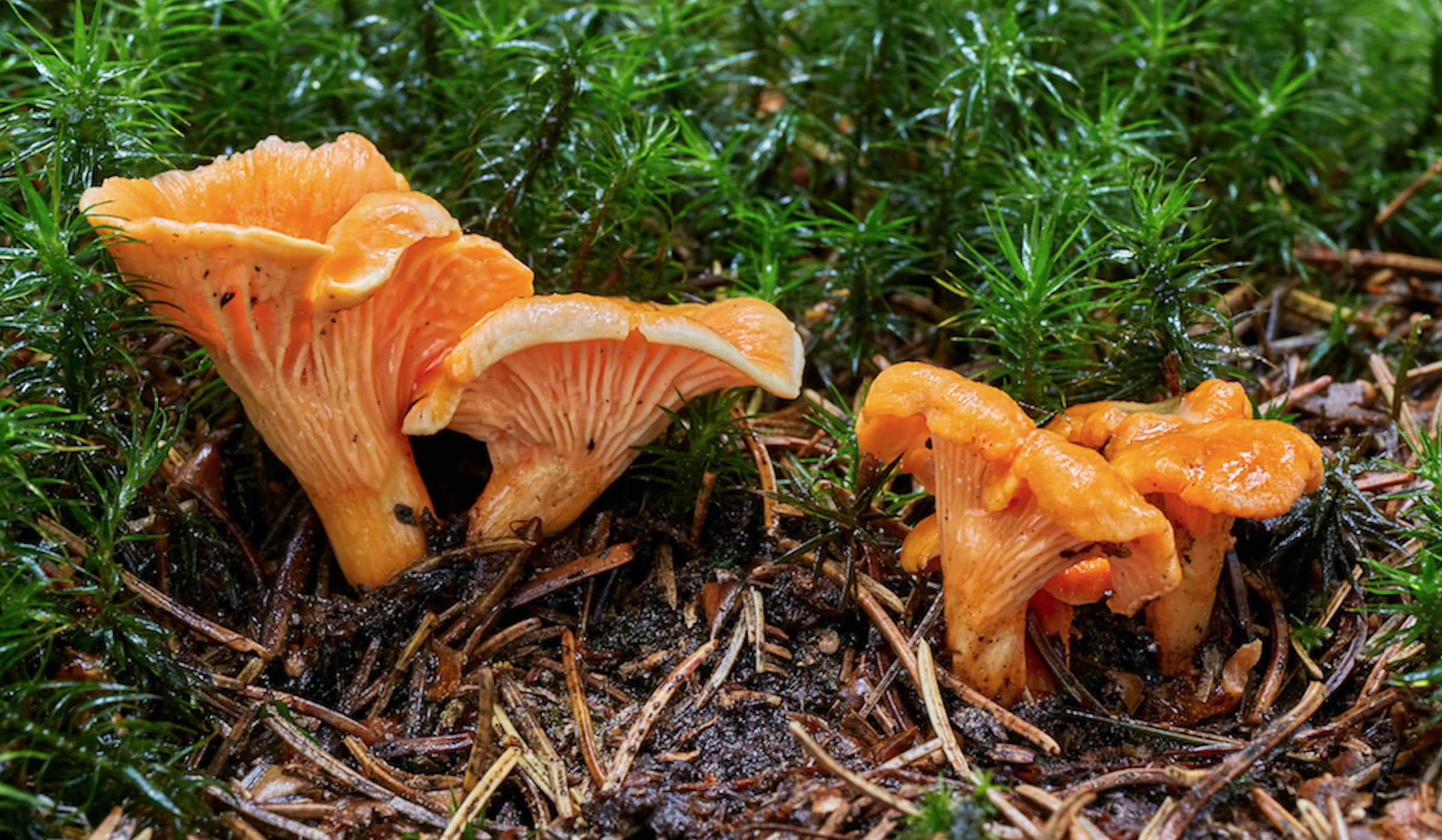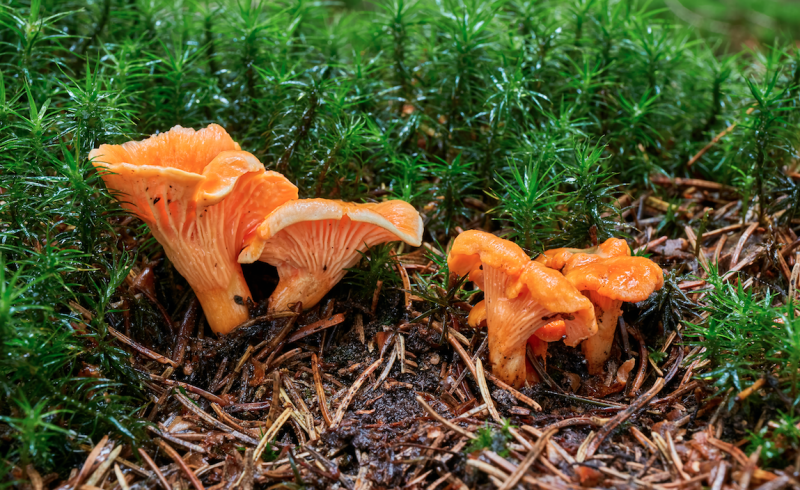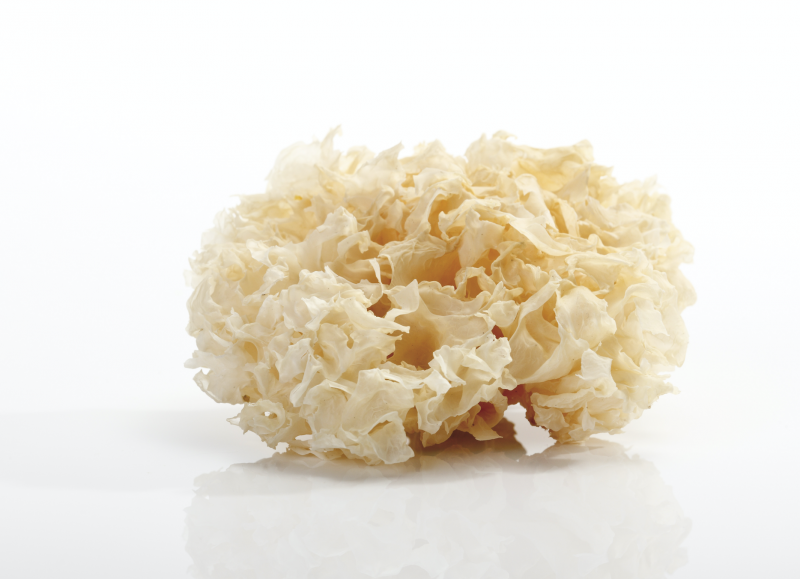A Beginner’s Guide to Foraging Wild Mushrooms
OutdoorHub Reporters 01.07.19

Whether it be the rule of three’s (three hours without maintaining body temperature, three days without water, three weeks without food) or the mantra of Beans, Bullets, and Band-Aids, securing food is a cornerstone of long-term survival. We grow our own food. We stock our shelves with store bought goods. However, nothing compares to the satisfaction of foraging in the woods and bringing home a basket full of wild edibles. That’s why we’re taking a closer look at some tips for foraging wild mushrooms.
The pride of gathering enough to fill your belly and the bellies of those that depend on you is a feeling beyond measure. One of the most rewarding quarries of Mother Nature’s gifts is edible wild mushrooms!
DISCLAIMERS
First the necessary disclaimers. Wild mushrooms come in three groups: delicious, medicinal (which may overlap with the first group), and those that make you dead. Don’t take them seriously and you might end up in the ICU waiting for a new liver. The take away is you must be 100% positive of what you are about to eat, or you risk a fatal mistake.
When in doubt, don’t touch it. Wild mushrooms should never be eaten raw, should be thoroughly cleaned and cooked. At first always cook and eat a small amount at first. Some wild mushrooms can cause allergic reactions or intestinal distress!
Quality Training
With wild mushrooms (edible, non-edible, medicinal), there is no substitute for professional training. The recent popularity of mushrooms and foraging has resulted in the exponential growth of the number clubs, online forums, Facebook groups, formal classes, and mushroom walks available to novices and experts alike. In your town or county there likely will be a class or guided tour of the local woods with a goal of educating participants.
Most classes will introduce to both the scientific and common names (there may be many for a single species) and most importantly the identifiable features of wild mushrooms that grow in your area. A quality class will include several hours of outdoor time. Armed with this knowledge — and it may take a class or two — you will have the confidence to head into the woods and forage on your own.
With an investment in classes make sure to also invest in several quality field guides. The Peterson Field Guide and the National Audubon Society Field Guide are excellent for identification. They are both heavy on technical descriptions and pictures. Books on edible mushrooms specific to your region are also a must. These usually focus on fewer species but provide an abundance of anecdotal information. Growing seasons, habitat preferences, sample cooking recipes and pictures all make these guides worthy additions to your foraging library. Make sure to pack a guide or two with you on your first few foraging trips.
Chanterelle
Finally, the most important key to a successful forage outing is knowing your local habitats. Several years ago, my goal was to add Chanterelles to my foraged list. I walked over 20 miles of trails through moderately thick forest, only to find a substantial patch in my neighbor’s backyard. I ignored Chanterelles habitat: they often grow at the edge of an opening in the forest or between the forest and the field and I was deep in the woods. Learn your surroundings.
- Are you walking a mature forest or a transitional space?
- What trees are in your area?
Some mushrooms are mycorrhizal (forming a symbiotic relationship with another plant) while others are saprotrophic (growing on decomposing materials). When targeting a specific species of mushroom, it is important to know whether to look in a hardwood or softwood forest, or to look at the base of a dead oak or up in a dead beech. Pick a local forest and walk it often, noticing the transitions between evergreen and deciduous, making note of the supporting vegetation (moss, ferns, etc.) and where all the micro-biomes are. This knowledge will help you to know what species to expect on your hikes.

I recommend several starter mushrooms. I have chosen these wild mushrooms species because of their distinct sizes, shapes, and features. There are NO poisonous look-a-likes for these species. But most importantly, they are all highly prized wild edible mushrooms and exceptionally tasty.
Chicken of the Woods,
Also known as Sulphur Shelf (Laetiporus Sulphureus), this is a bright orange beacon in the forest. It is a bracketed fungus that grows on oak trees and a few evergreens like hemlock. Unlike the traditional cap and stem mushroom, Chickens grow in multiple shelves with no discernible stems. They have orange tops and white to yellow undersides. Different from the typical cultivated mushroom, the Chicken of the Woods underside has pores instead of gills. There are several sub-species of Laetiporus. Those growing on dead oak tend to have a whiter underside in comparison to those growing on Hemlock which have a more yellow underside. I prefer clusters found on oaks as I find them to be milder tasting and less piney.

The Chicken of the Woods is particularly rewarding to forage. They can be seen from a mile away and are most often found in late summer through the fall. I know of a few clusters that peak in early July so keep your eyes open. Clusters can grow very large. One cluster I harvested in the summer of 2017 was over 15 pounds. Enough to eat that day, freeze some, dry some, and I still had some leftover to can. The flavor and texture are both similar to chicken with the base of the mushroom tending to fibrous and tough. When sautéed, they soak up copious amounts of butter or olive oil and can be added to rice, mixed with meats or vegetables or eaten as a side. Batter dipped and fried it makes a great appetizer. Canned in brine with garlic, red pepper and thyme they will store for well over a year.
Black Trumpets
The second recommended species is Black Trumpets, aka Horn of Plenty (Craterellus Cornucopioides). Trumpets are another non-traditional looking wild mushroom. This choice edible pops up out of the forest floor as a small black funnel with no stem or cap. Hard to spot from a distance, this species grows in a limited habitat. Trumpets are found in hardwood forests closest to beech trees and often in or at the edges of small patches of moss. While Chickens are a blaze of orange in a monochromatic forest, Black Trumpets are best found when walking slowly and looking straight down – look for a black hole in the leaves. More than once I have searched for hours only to get flustered, look down, and found I was standing in a Black Trumpet patch.
A slow methodical search is the most rewarding. Look for beech and moss and scrutinize every square inch of the forest floor. Rich in flavor they grow from early summer up to the first frost of fall. Rarely found in quantity (I usually only gather two or three handfuls on a walk) 2018 was a banner year. At the peak of the season I found seven pounds on one morning walk. After several meals the remaining six pounds were dried and barely filled a quart jar. My favorite cooking method is to simply sauté in bacon fat. Serve with cheesy grits or atop a grilled pizza. They truly shine with wild game. We set aside a special night during the foraging season for Black Trumpets and Venison Backstrap (medium rare of course).

My final recommended species is the Cauliflower Mushroom (Sparassis)
Cauliflowers look like a mad scientist decided to grow egg noodles from the forest floor. Cauliflowers are formed of large folds of firm and thin white flesh. They are exclusively found on or near rotting pine stumps. My first cauliflower of 2018 was roughly the size of a basketball. Sadly, they do not last long and should be picked immediately when found in good condition. With all the folds, nooks, and crannies they must be cleaned thoroughly to remove leaves, pine needles, and other stowaways. Their firm texture holds up well to the necessary separating and washing. Cauliflowers are another good candidate for butter and fire, with spaghetti sauce, but we prefer them in a light beer batter and fried.

Take the Time to Forage for Wild Mushrooms
I hope you take the time over the summer and fall to look near and far for these and other edible wild mushrooms. But also engage your curiosity. Try to identify other species you come across, you may find a gem. On my last walk, in an area new to me, I came across uncountable numbers of a strange orange mushroom. Taking a single sample home I positively identified it as a Saffron Milk Cap (Lactarius deliciosus). Next year I will return to that spot and hopefully, after another positive identification, add this delicious sample to my plate.
Conclusion
Whatever you forage for and find, have it identified before you eat it. There are numerous active Facebook groups that can assist with positive identifications specific to your area. Make sure to take several pictures to help groups identify your sample. The pictures should include one before it is picked (to identify the habitat), and close ups shots of the cap, stem, and underside (especially where the cap meets the stem). Mushroom enthusiasts are eager to share their knowledge and foster safe and responsible foraging practices in others. As your confidence grows seek out other species. These can include Chanterelles, Morels, Hedgehogs, (high in protein), Hen of the Woods, Corals, and many, many more. While a few hours walking in the woods is its own reward, a few hours with a full basket of wild edible mushrooms is a unique reward that few will ever experience.

